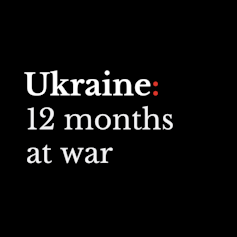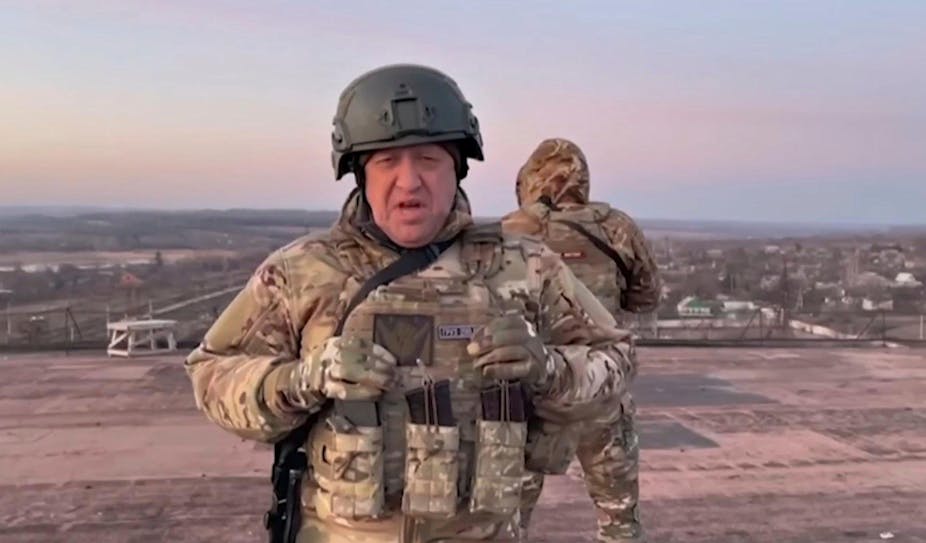Ukrainian units are forcing their Russian foes back by what on some days seems like a few metres at a time. But on June 24, at least some Russian troops moved much more rapidly toward their own capital.
Our last Ukraine recap, which we published and sent out on June 22, looked in some detail at the very public row between the country’s defence minister, Sergei Shoigu, and the boss of the Wagner Group private military company, Yevgeny Prigozhin. Barely had our ink dried when Prigozhin led 25,000 of his troops back into Russia.
With a call to his men to join him on a “march for justice” to oust the defence minister, Prigozhin made what appeared to be a triumphant entrance to Rostov-on-Don, the site of the headquarters of the southern command of the Russian military, where he boasted of having “taken control”. Certainly plenty of images appeared of him and his troops disporting themselves around the city, seemingly with the enthusiastic backing of many of the people there.
With the enthusiastic help of Tracey German, an expert in conflict and security from King’s College London, we were able, in real time, to update her piece about the deep divisions among Putin’s top military commanders – divisions which appear to be no closer to being healed.
As for Vladimir Putin, the Russian president seemed shaken when he appeared on Russian national television the following morning to denounce Prigozhin and his men as delivering a “stab in the back of our country and our people”. Putin vowed a “harsh response” to Prigozhin and those who were joining the Wagner Group boss up the M4 highway towards Moscow.
On they moved, through the city of Voronezh, to within 125 miles of the Russian capital, which was where the Wagner Group caravan abruptly stopped. Apparently unwilling to “spill more Russian blood”, Prigozhin announced he’d reached an agreement with the Kremlin and that his men would return to their bases.

Since Vladimir Putin sent his war machine into Ukraine on February 24 2022, The Conversation has called upon some of the leading experts in international security, geopolitics and military tactics to help our readers understand the big issues. You can also subscribe to our fortnightly recap of expert analysis of the conflict in Ukraine.
It was, according to Stefan Wolff of the University of Birmingham and Tatyana Malyarenko of the University of Odesa, a serious humiliation for Putin, whose power in large resides in his carefully cultivated image. The fact that he had to negotiate with a man who was at one point his chef – and reportedly with the help of Belarussian leader Alexander Lukashenko, who has previously appeared entirely dependent on the Russian president – made Putin look anything but strong.
Nearly a fortnight later we still don’t know the whole story. Prigozhin, who apparently agreed to relocate to Belarus, seems to be free to move between the two countries with a degree of security. Wolff and Malyarenko remind us of a dictum of Lenin’s: that without the “dress rehearsal” of 1905, the victory of the October Revolution in 1917 “would have been impossible”. This, they believe, “should deeply worry Putin and his inner circle”.
Read more: Putin seriously weakened by Wagner Group mutiny – but it was a missed opportunity for Ukraine too
So we now have the rather strange situation in which a Russian military commander, albeit of a private sector army, is ensconced with at least some of his troops in Belarus. How Lukashenko might feel about this is unclear, but at least his reported role in bringing the insurrection to a settlement gives him the chance to pose as someone whose intervention got the Russian president out of a tight spot and helped stave off a civil war, writes Natalya Chernyshova, a Russia expert at Queen Mary University of London.

Relations between Lukashenko and Putin haven’t always been smooth and for a while there Belarus flirted with closer relations with the EU. But the mass protests that followed what many people thought of as a rigged election in 2020 changed all that.
Putin offered to send in troops to quell the protests, but the Belarus president managed to cling on to power with a mix of repression and media control. Now, of course, he has Russian troops there after all. But to what extent they are under Moscow’s control has yet to be seen.
Meanwhile in nearby Vilnius
The Lithuanian capital is gearing up for a Nato summit next week with, as you’d expect, Ukraine high on the agenda. US president Joe Biden is decidedly bullish about prospects for the talkfest, telling Nato chief Jens Stoltenberg recently: “The allies have never been more united.”
This may reflect a degree of over-optimism on the part of the US president. While Nato’s response to the invasion of Ukraine has given it a fresh sense of purpose in the wake of the shambolic withdrawal from Afghanistan in 2021, there are still a few bones of contention to chew over.
Finland has successfully acceded to membership of the alliance, hugely extending Nato’s border with Russia. But Sweden, another candidate member desperate to join, is still being blocked by Turkey and Hungary.
As Mark Webber, a professor of international politics at the University of Birmingham, notes, the recently reelected Turkish president, Recep Tayyip Erdoğan, is angered by Sweden’s backing for Kurdish separatists. But he may be mollified if the US changes its mind over the supply of F-16 fighter jets. Hungary’s maverick president, Viktor Orbán, enjoys a close relationship with Erdoğan. So that bears watching.
Any progress on Ukraine’s wish to join Nato is unlikely, Webber believes. Article 5 of the Nato treaty makes it nigh on impossible to admit a new member while it is at war as it would mean pulling the alliance directly into conflict with Russia.
Parallels with the past
We recently also looked back 75 years to Russia’s blockade of Berlin which was one of the first really significant landmarks of the cold war developing between the west and the Soviet Union.
Stefan Wolff and Tetyana Malyarenko see echoes of that blockade in Russia’s tactics in eastern Ukraine: the appointment of pro-Moscow officials, brutalisation of the local population and Russia’s attempts to indoctrinate the young by introducing a Russian curriculum into schools, similar to reforms to schools in east Berlin. Both Stalin and Putin wasted no time in encouraging a Moscow-friendly media, either.
For Jan Ruzicka and Gerald Hughes of Aberystwyth University, the blockade of Berlin and the western airlift bring Ukraine’s defiant defence of the city of Bakhmut to mind as symbolic of Ukraine’s resistance. Despite being reduced to rubble, and Moscow’s claims to have taken the city, Ukraine has refused to give it up. According to recent intelligence reported by the Institute for the Study of War, Ukraine is pushing Russian troops back with some success, denying Russia a victory despite months of effort, millions of roubles of equipment and thousands of men. No wonder Yevgeny Prigozhin is unhappy.
Read more: Berlin airlift and Ukraine war: the importance of symbols during conflicts
Ukraine Recap is available as a fortnightly email newsletter. Click here to get our recaps directly in your inbox.

